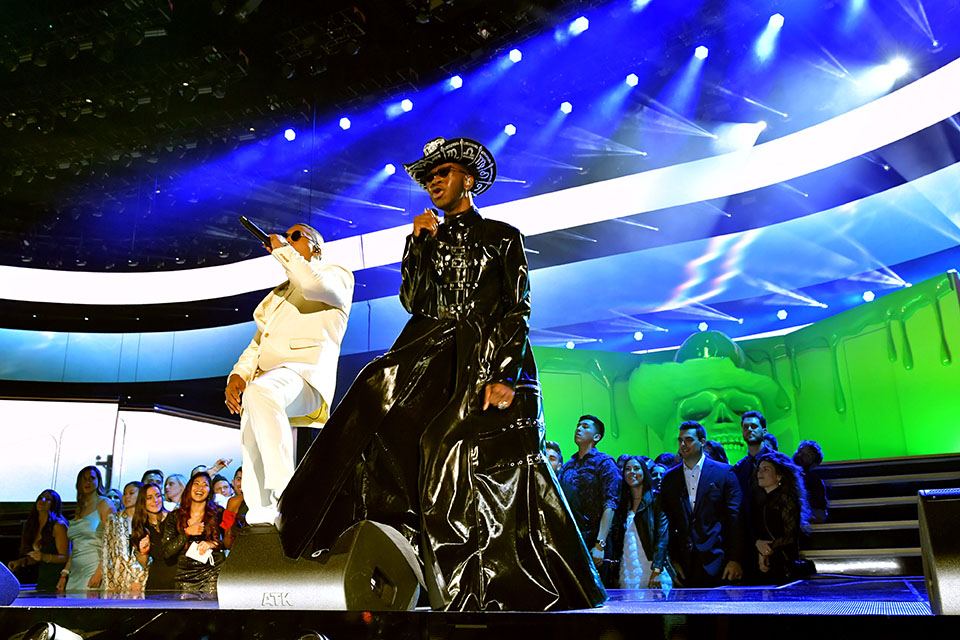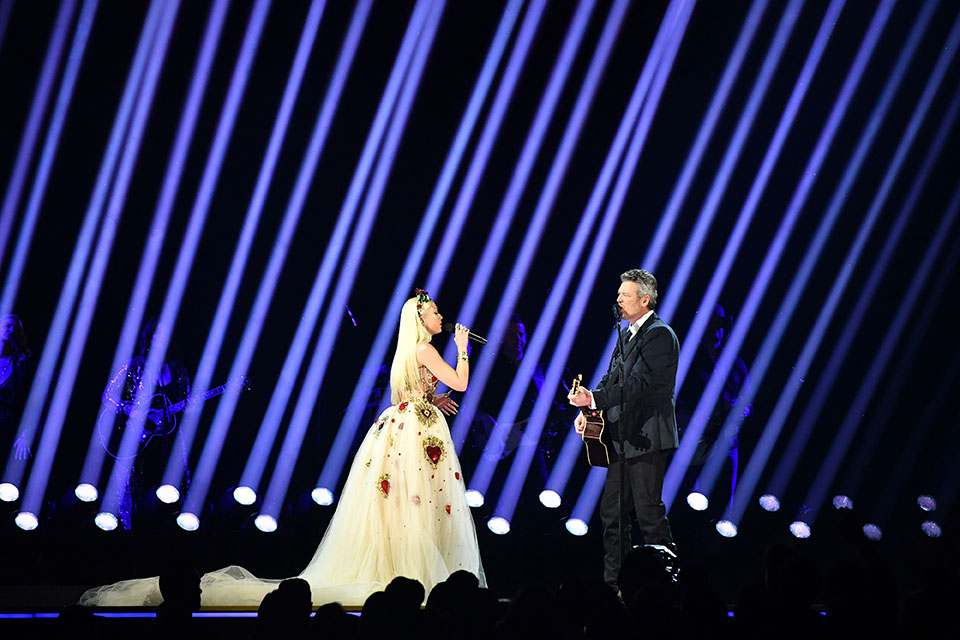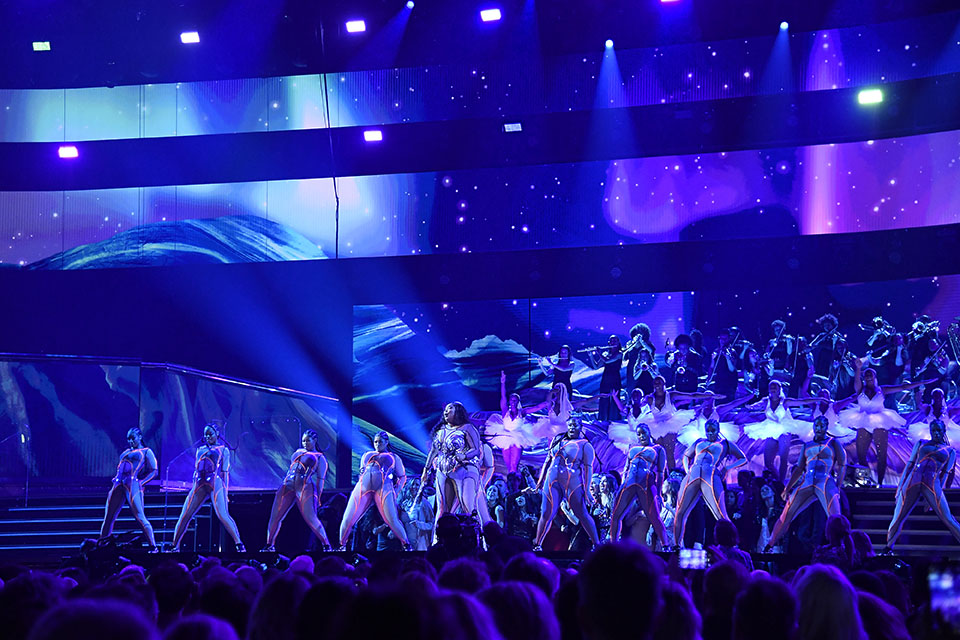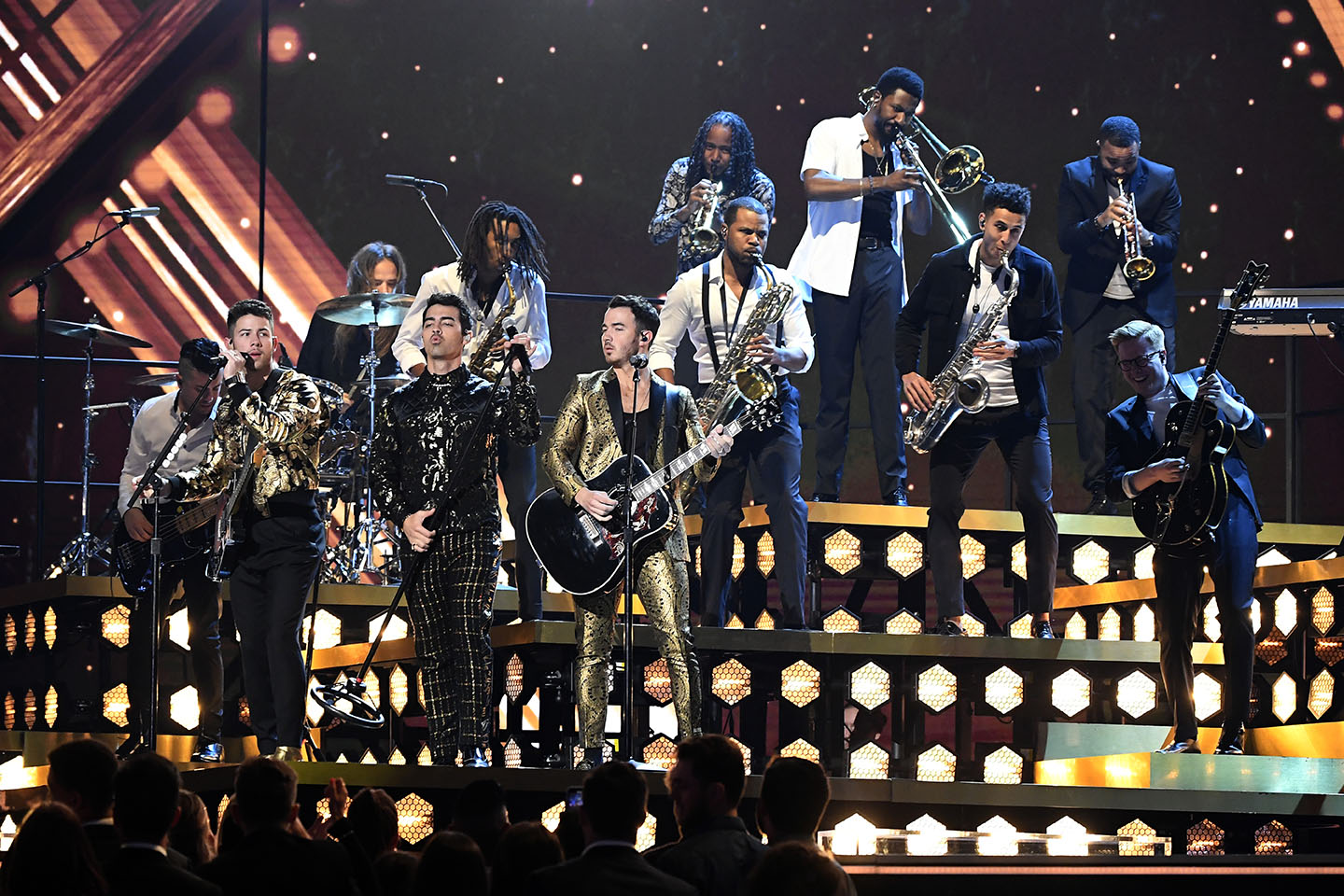A celebratory evening for music and musicians, the 2020 Grammy Awards were broadcast live on CBS from The Staples Center in Los Angeles on Sunday, January 26. Bob Dickinson and Noah Mitz of the LA-based firm, Full Flood, were responsible for lighting the stars and making them glitter. Live Design chats with Mitz about this challenging live-for-broadcast event, with lighting gear provided by PRG. Check out the lighting plots, gear list, and crew here.
Live Design: Overall scenic design concept and how the lighting goes hand-in-hand?
Noah Mitz: The set this year was an expansion on the 2019 Grammy Awards set. The primary goal was to encompass the widest possible stage picture across the arena, including audience areas built into the offstage sides of the two performance stages. This year, the upstage wall of the set featured an uninterrupted 14'-tall ground-supported LED screen with a series of video tile ribbons above. We designed a few long, uninterrupted lighting positions between the screen ribbons and a wide “horseshoe” truss that capped off the top of the set. We also added two grid walls of GLP Impression X4S units that further widened the stage picture offstage into the arena.

LD: What were the workhorse fixtures, and where were they placed?
NM: The overhead workhorse spot fixtures were the PRG Best Boy HP. These were great given the high electric trims and the need for a crisp shuttering light. The primary overhead wash was the GLP X4L, which was a development from using the X4XL in 2019. We found the scale of the X4L to be a better fit in our rig and having individual pixel mapping of each LED cell was a welcome feature. The primary automated fixture for the audience was the [Vari-Lite] VL2600.
This year, we switched out our primary floor fixtures to Robe BMFL Wash Beams with [TMB Solaris] Flare Q+LR Bars attached to the front of the cart. The pure power of both fixtures was a great asset in the battle to compete with the brightness of the backing LED screens on the performance stages. We also designed a series of Flare Bars installed permanently into the side wings of the performance stages in order to extend the low horizontal statement made by the Flare Bars on the floor carts.

LD: What about color and movement in the lighting?
NM: We put strong effort into coordinating the lighting color with the screens department for the overall show and award moments as well as the performances. Making stage pictures cohesive in their color and shape required close collaboration with screens producers Drew Findley and Raj Kapoor, as well as the D3 operator, Matt Cotter. The main set also featured a series of [Martin] Sceptron & Fatron LED fixtures that were controlled by the D3. However, there was a “reverse pixel-map” of sorts that allowed Andy O’Reilly to control broader chunks of the set as traditional lighting fixtures from the lighting console when desired.
Andy did a great job pixel mapping all the various X4 wash fixtures across the whole arena that allowed for dynamic effects in wide shots at the beginning and ends of show acts as well as in some performances. Likewise, we upgraded all the LED tape that was in the stage edge and all the scenic steps to be Pixel Tape this year. It allowed us the ability to map the tape on the console, which was a big upgrade from the standard RGB tape we’ve had in the front of the set for the last few years.

LD: Any special numbers or special challenges this year?
NM: This year we had some challenges incorporating lighting and set electrics into a few of the looks that were designed closer to the rehearsal days. The carved foam risers that housed the orchestra for Lizzo’s opening number had a series of Sceptron VDO 10 units incorporated into the “folds” of the carving. Similarly, The Jonas Brothers’ performance had the Portman P2 units that were housed in the platform rises. Both sets were rush orders from the shop and arrived on site very close to rehearsals, but of course, our crew pulled it together flawlessly in the end. Kudos goes to lighting director Madigan Stehly who headed up all the coordination with the art department and the various details for the performance looks including several very complicated builds.

LD: How do you approach the design of the Grammys each year?
NM: We start with the “knowns”—the new set, any new camera requirements, and any show-flow or special moments that we might know early in the process. Once we get through that list, we start on the performances and push to get as much of those locked down as early as possible before load-in. This helps reduce any big rushes or details getting lost in the cracks.
Really, this show wouldn’t be a success without an all-star team supporting Bob and I on all levels. Madigan, Will, Bryan, and Jay made everything run smoothly and the programming team of Andy O’Reilly, Patrick Boozer, and Ryan Tanker deserve huge recognition of their amazing work, talent, and dedication. That team plus an amazing crew of gaffers, electricians, techs, and PRG support make the whole project a success year after year.